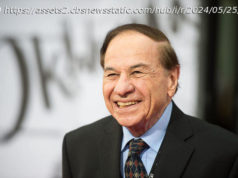Teachers are building the next blue wave — without much help from Democrats.
Angry educators are flooding down-ballot races in the wake of recent red-state teacher strikes, accelerating the Democratic Party’s rebuilding process at the statehouse level and raising the prospect of legislative gains after years of decline.
Nearly 300 members of the American Federation of Teachers union are running for political office this year, more than double the number in each of the years 2012 and 2016. The teacher candidacies are part of a rising tide of political activism in 2018, with nearly 800 candidates running in the first round of Oklahoma’s primaries, breaking the previous record of 594 set in 2006, and more than 200 filing to run in next month’s Arizona primary — more than ran during each of the previous three election cycles.
The teacher candidacies suggest that the wave of teacher strikes and protests that began last winter in West Virginia and later spread to Oklahoma, Arizona and elsewhere created a grass-roots political opportunity. With their unions still reeling from a Supreme Court decision last month that’s expected to deal a heavy financial blow, the teacher candidates are hoping to unseat conservative majorities that have dominated state legislatures since the Obama years.
“We’re receiving applications by the hour. It’s amazing,” said Lily Eskelsen Garcia, president of the National Education Association. “We’re really seeing the sun, moon and stars line up with the women’s march, the educator spring.”
There are some early signs of success, and not just among Democrats. In May, high school math teacher Travis Brenda defeated the majority leader of the Kentucky House, Jonathan Shell, in the Republican primary. In Oklahoma, three Democrats won special elections in state legislative districts in which President Donald Trump enjoyed huge margins. And in West Virginia, the local teachers union helped defeat Robert Karnes, one of its main antagonists in the state Senate, and voted in Republican challenger Bill Hamilton, a moderate more sympathetic to the union’s cause.
Hamilton won by a landslide — 63 percent to 37 percent — in what local unions see as a bellwether for the general election.
“Suffice to say our folks are motivated,” said David Haney, executive director of the West Virginia Education Association.
The nationwide teacher protests began in February when 20,000 West Virginia public school teachers went on strike for nine days to protest stagnant pay. The union ultimately secured a 5 percent pay increase, igniting similar walkouts in Oklahoma and Arizona, where teachers also won pay increases.
Now the red-state movement is spreading to state and local races, attracting local excitement but little attention from Democratic power brokers. Of 17 possible congressional races in Arizona, Oklahoma and West Virginia, just four are on the Democratic Congressional Campaign Committee’s list of targeted races.
Amid a crucially important congressional midterm contest, the Democratic establishment isn’t keen to spend money in many places that heavily favored candidate Trump in 2016. “They’re taking their own lead in all of this,” said House Minority Leader Nancy Pelosi when asked about mobilizing teachers for the November election.
Teachers unions, meanwhile, are hedging on their commitment to the Democrats amid the national political circus. Although the Oklahoma Education Association’s crop of candidates is overwhelmingly Democratic — just six of 33 candidates are running as Republicans — the OEA hasn’t forgotten that its membership is split evenly between Republicans and Democrats, said OEA President Alicia Priest.
“We’re really pushing ‘vote your job,’” Priest said. “Public education is your paycheck and your passion, and you need to vote as though it is.”
Teachers might conceivably prove formidable candidates in suburban swing areas like the one that helped Democrat Ralph Northam win his race for governor in Virginia. And they’re logical torch-bearers for gun control, an issue that galvanized the left after the deadly school shooting in Parkland, Florida.
Fifteen years ago, Oklahoma was ruled by Democrats — and it could be headed that way again. The Republican surge reached a critical point in 2004 when the GOP took over the Oklahoma House; in 2008, Republicans took control of the Senate, and in 2010 they seized the governor’s office.
The rest of the country soon followed, with Republicans seizing 12 state legislatures in 2010 and picking up another six after that. Republicans now control 31 state legislatures, while Democrats hold just 14 (with the rest divided). If Democrats don’t make significant gains by 2020, Republicans state legislatures will once again control redistricting, reshaping the foundation of American politics for another decade.
In Oklahoma, there are some signs that the pendulum may be swinging back. Democrats recently won special elections in three districts in which Trump won by at least 10 percentage points, the most unlikely of them in the conservative Tulsa suburbs, where Democrat Allison Ikley-Freeman — a 26-year-old lesbian — won her state Senate race by fewer than three dozen votes. Trump had won the district by 41 percentage points.
At the center of Ikley-Freeman’s message was education.
“We hear reports back from all our clients, and everyone they’re talking to says education is their No. 1 issue,” said Mike Whelan, a Democratic consultant who advised candidates on the special election campaigns.
Whelan is working with several candidates, including John Waldron, a government and history teacher at Booker T. Washington High School in Tulsa who won his primary race by 8 percentage points. Across the state, more than 50 teacher candidates won their races outright or earned enough votes to advance to runoffs in August.
“The strength of the movement really thrilled me,” Waldron said. “There were thousands of people marching and lining the streets. It felt like the ground was shaking — Oklahoma was changing.”
West Virginia also was dominated for decades by Democrats, with coal unions holding a tight grip on state politics until they lost the House to Republicans in 2014. West Virginians chose Democrat Jim Justice for governor in 2016, but he switched to the Republican Party a few months later. The most prominent Democrat in the state now is Sen. Joe Manchin, who has held on through a combination of hometown swagger and savvy for retail politics. He’s leading his general election opponent, state Attorney General Patrick Morrisey, by 9 percentage points.
“The teachers strike has the potential to be a real game changer in November,” said Mike Plante, a West Virginia Democratic consultant.
Of 115 candidates endorsed by the West Virginia Education Association in the May 8 primary, 99 won their races. Hamilton, the Republican state lawmaker who beat the incumbent Karnes, won with a mix of support from teachers and other unions.






